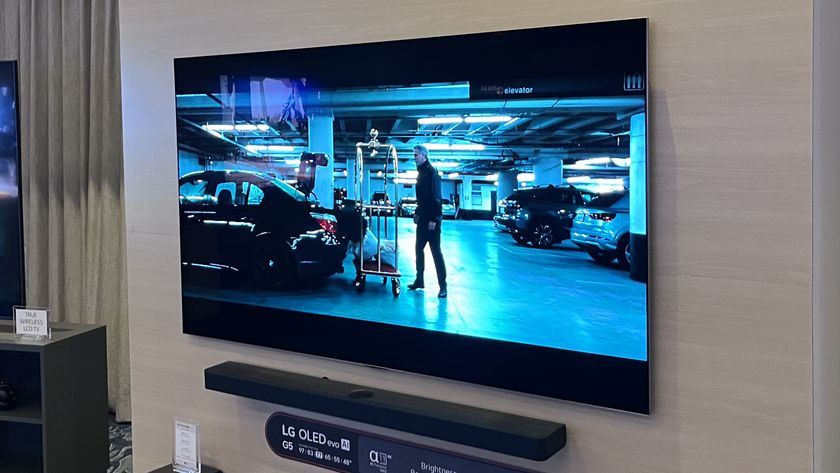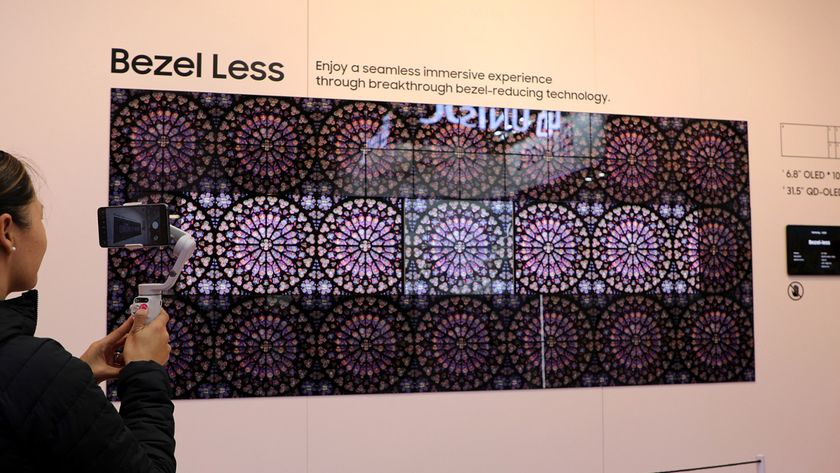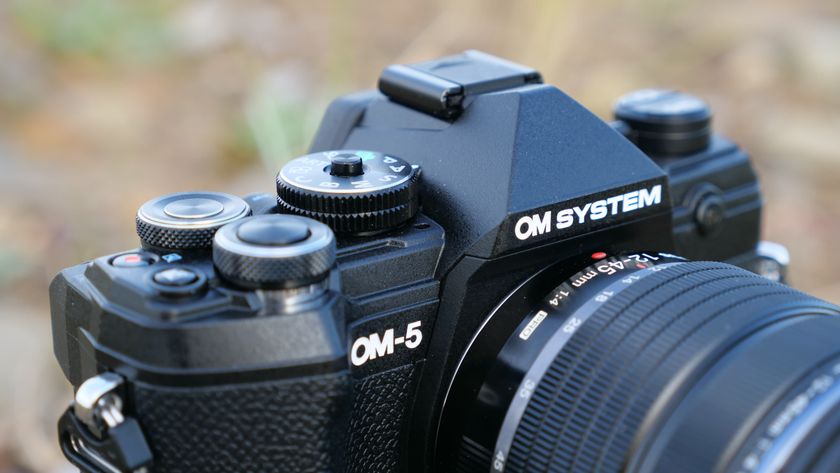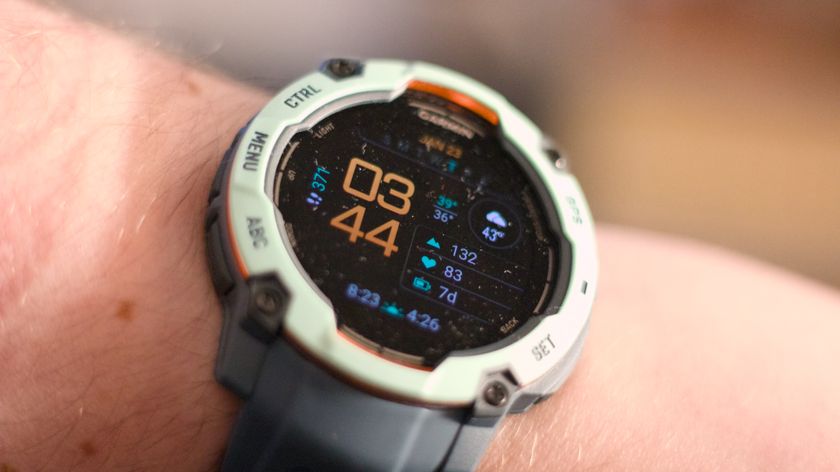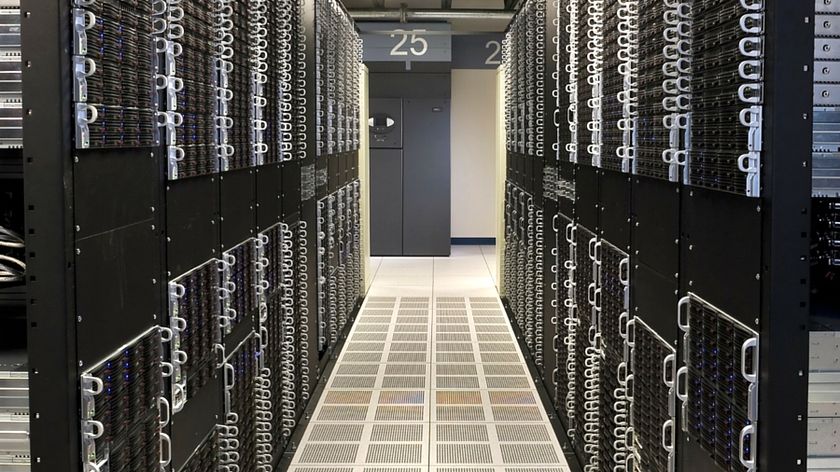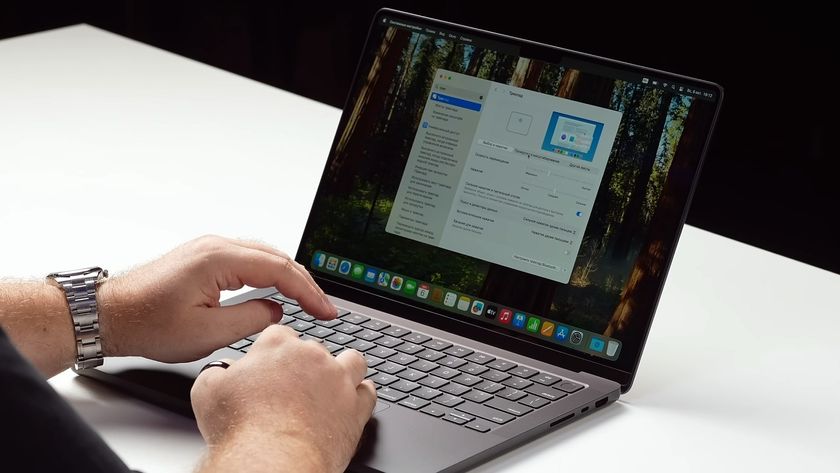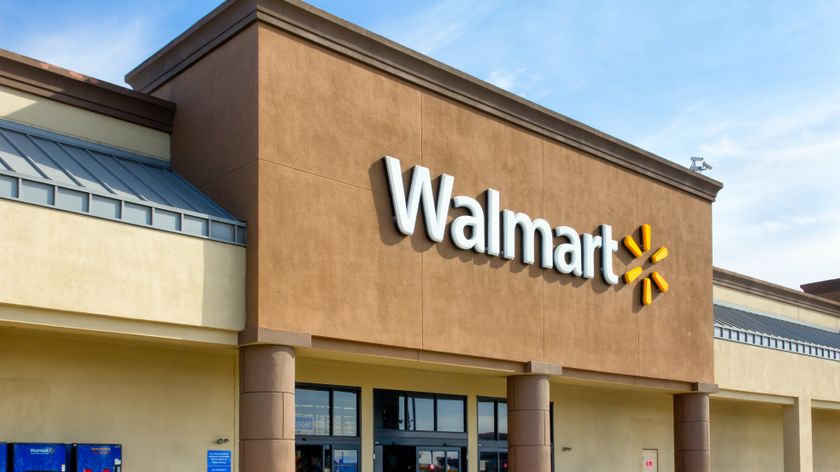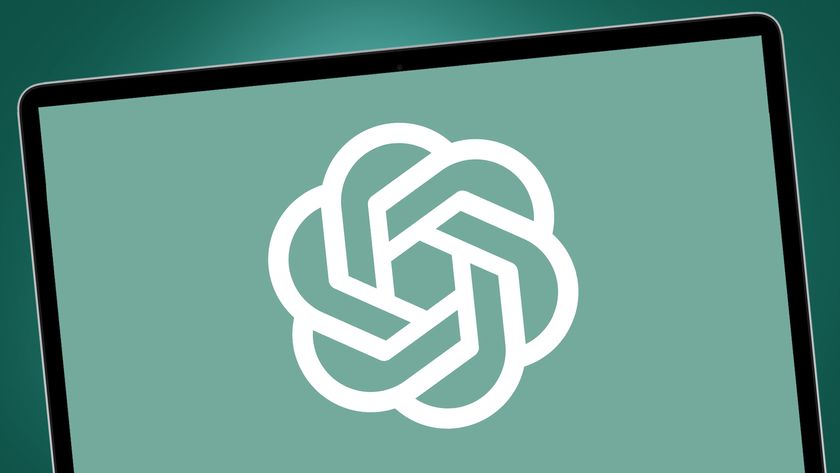Do we really need 8K TVs yet?
The first 8K TVs are here, but it’s just the beginning
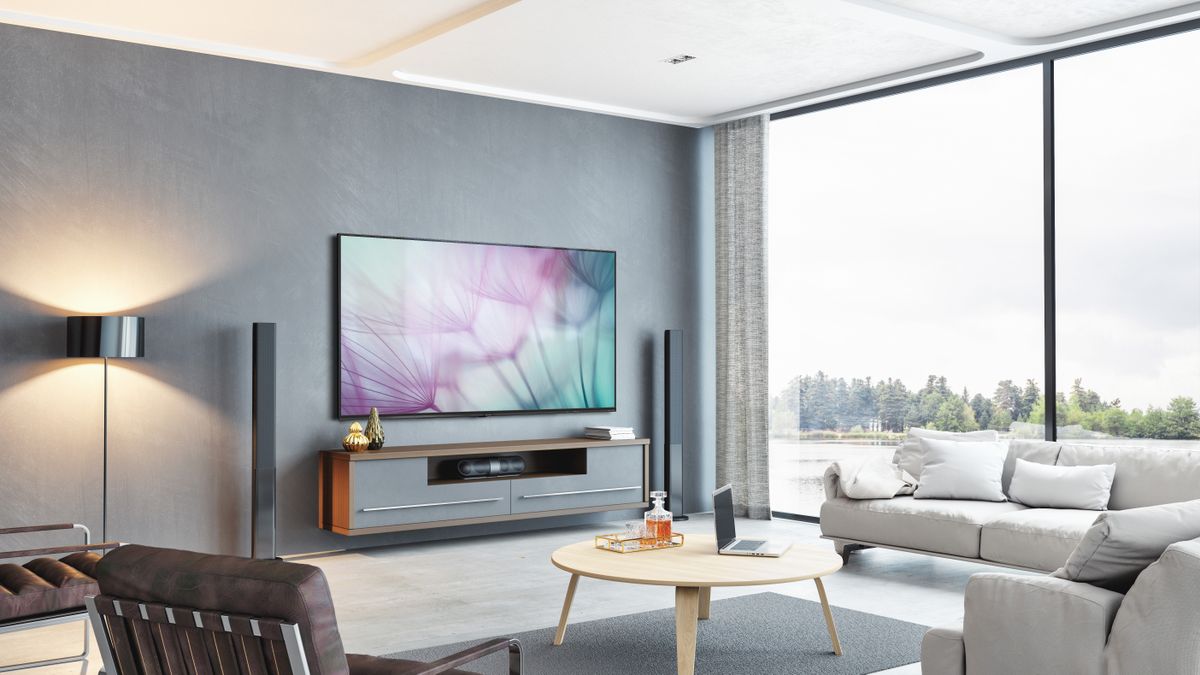
The first 8K TV is here. Now available to buy for a bargain €11,990 ($14,732, £10,520, AUS$19,216), Sharp's Aquos LC-70X500E is the first 8K TV to go on sale in Europe and around the world.
An 80-inch version, the LC-80XU30, has been on sale in Japan for a few years (we even reviewed it), but this new model's global availability marks nothing less than the beginning of the 8K era.
The LC-70X500E was unveiled at the IFA Global Press Conference in Rome, and the venue was purposely picked - it was now or never. IFA 2018 has now arrived with an even greater array of displays, including the astonishing Samsung Q900R 8K TV.
But wait. 8K? What about 4K? Isn't that supposed to be the latest and greatest in TVs? Why are we obsessed with 7,680x4,320 pixel TVs? Do we really need 8K TVs?
Regardless, more 8K TVs are coming in 2018
8K content may be virtually non-existent, but we're about to see every major brand launch an 8K TV.
“Will the other TV brands be able to resist the temptation to offer a premium 8K TV? Of course they won’t,” said Paul Gray, Director Research and Analysis, Technology, Media & Telecom, IHS, speaking to TechRadar at the IFA Global Press Conference.
CES 2018 also saw a bevy of 8K TVs shown-off, including Samsung's 85-inch Q9S 8K QLED TV, Sony's 85-inch 8K TV, and LG Display's 88-inch 8K OLED TV display. All three were prototypes … but not for long, with each manufacturer delivering full models at the IFA 2018 show before the end of the year.
Get daily insight, inspiration and deals in your inbox
Sign up for breaking news, reviews, opinion, top tech deals, and more.
But these TVs are a mere appetiser. Next comes wallpaper TVs.
But these TVs are a mere appetiser. Next comes wallpaper TVs.
“People want larger screens at home,” said Sascha Lange, VP Marketing & Sales at Sharp, who thinks the only limitation on TV sizes is resolution, hence the drive for 8K. “The pixel density of a 64-inch 4K TV is exactly the same as a 32-inch Full HD TV,” he said. “And a 120-inch 8K TV also has exactly the same pixel density as a 32-inch Full HD TV.”
That mighty concept, and others, like Samsung’s The Wall, would allow broadcasters to capture, say, an entire football pitch. You would sit close to your 150-inch 8K wallpaper TV and turn your head to watch the action, just as if you were there.
“Today even a 70-inch screen doesn’t fill a wall – you could easily get a 120-inch screen on a wall in any home,” says Lange. “People want larger screens and they have the space, and now the technology is here.”
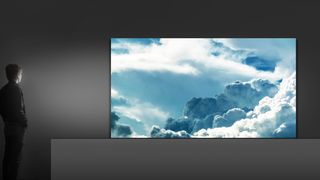
How big do we want our TVs?
Sharp can see a clear trend, and it’s for ever-bigger TVs.
The highest demand for better screens and larger displays comes from China, where the average size of a TV is 54-inches. In the U.S. it’s 50-inches, in Europe it’s 49-inches, and in Japan it’s just 40-inches.
In fact, 55-59-inch TVs are the biggest-selling size of TV in Europe right now, and it’s a sector that’s grown by almost a quarter over the last year alone.
IHS Markit predicts that 8K displays will make up only about 1% of the 60-inch and larger display market in 2018, but a whopping 9% by 2020. That’s a massive chunk of the TV market, and it’s easily the most lucrative. 8K is about cash.
8K is about cash.
OK, so sales of 70-inch and bigger TVs make up only 0.4% of the European TV market, but if you are in the market for one, what would you buy?
“Sharp’s 8K TV and a 77-inch OLED TV are very similar prices,” says Gray, who's unsure about this TV's commercial future as a mainstream product. “People will buy 8K TVs as monitors, as 4K multi-screens, as whiteboards, but as high resolution TVs, probably not – this is a hybrid prosumer product.”
So how big should an 8K TV be?
“If 40-inch was the starting point for 4K, then 80-inch has to be the starting point for 8K,” says Gray. That suggests the LC-70X500E is on the small side. “But there are other reasons to have a 65-inch 8K screen, such as character readability in China, and the fact that smart TVs are as much about graphics as they are about video.”
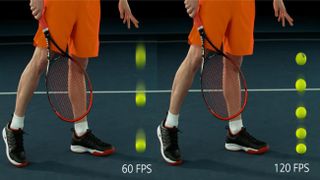
The 8K frame rate problem
Video is consecutive images, or frames, flashed-up on a screen in quick succession. The more you have per second, the smoother the image. It’s expressed as frames per second (fps), though there’s no internationally accepted frame rate so PAL and SECAM (Europe and China) differs from NTSC (North America and Japan).
Sharp’s 8K TV can show a maximum of 50/60 fps (for PAL/NTSC), but that’s a technology that pretty much maxes-out at 4K.
“If you double the resolution, then you ought to double the frame rate,” says Gray. “Otherwise all you get is camera blur that’s very accurately recorded!”
So just as we went from 24/25fps for HD to 50/60 fps in Ultra HD 4k, we should go to 100/120fps for 8K.
“Broadcasters have absolutely bought into that because motion sharpness is more important than anything else,” says Gray. Put simply, watching video in 8K without 100/120 fps is pointless.
Put simply, watching video in 8K without 100/120 fps is pointless.
Sadly, there’s no way of getting high frame rates into any kind of TV. Not even the upcoming HDMI 2.1 standard will change that, though it will support 8K resolutions.
So the LC-70X500E includes eight HDMI ports, four of which need to be used simultaneously to get a 8K signal into it. Sharp’s new 8C-B60A, the world’s first 8K camcorder, can capture 8K content at 60 fps and be hooked-up to the LC-70X500E.
Sharp also says that still images in 8K can be viewed from a USB thumb drive or HDD. The LC-70X500E will also upscale 4K into 8K. However, if you want to watch live 8K TV broadcasts, you’re going to have to move to Japan and tune in to NHK’s satellite TV broadcasts in 8K resolution.

8K could rejuvenate 360 and VR
“The application that is crying out for more resolution is VR headsets because VR will only work when you become completely unaware of the pixel structure,” says Gray.
He also suggests that high resolutions could be used by broadcasters to offer completely new immersive ways of watching TV by capturing in 8K and zooming-in on specific areas.
“360 with 4K is an interesting opportunity for short content ‘snacks’, especially for live coverage where you want a sense of presence, such as at the Olympics,” says Gray. “You could scroll around with your remote control, like having a periscope, to look around the stadium.” Those kind of viewing options require 8K capture.
8K TVs might seem pointless to some, but it will help sell bigger TVs, which are becoming more popular, it will introduce 8K as a creative capture format, it will likely rejuvenate VR, and it could completely change how we watch TV.
“There’s a whole new creative production grammar and language that will need to be used,” says Gray of the 8K era. “The storytelling will be different, with much longer shots, and more time to soak it all in, much like the best VR experiences.”
- IFA 2018 is Europe's biggest tech show. The TechRadar team is in Berlin to bring you all the breaking news and hands-on first impressions of new phones, watches and other tech as they're announced.
Jamie is a freelance tech, travel and space journalist based in the UK. He’s been writing regularly for Techradar since it was launched in 2008 and also writes regularly for Forbes, The Telegraph, the South China Morning Post, Sky & Telescope and the Sky At Night magazine as well as other Future titles T3, Digital Camera World, All About Space and Space.com. He also edits two of his own websites, TravGear.com and WhenIsTheNextEclipse.com that reflect his obsession with travel gear and solar eclipse travel. He is the author of A Stargazing Program For Beginners (Springer, 2015),

